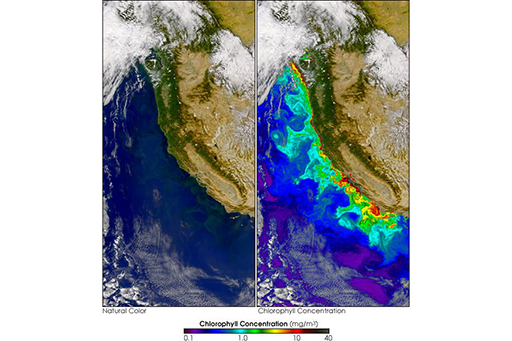3.5 Where does it come from?
Oil comes from the ground, but how does it get there? In this section, you’ll be learning how oil forms and how it becomes trapped in the rocks ready for us to exploit it.
Biological sources of oil
You may have heard of oil being described as ‘fossil fuel’ – that’s because it’s made up of the remains of living organisms which died millions of years ago.
During life, plants, algae and some bacteria use energy from the sun to turn carbon dioxide and water from their environment into organic matter. This process locks the energy from the sun into the bonds in organic molecules. This is what photosynthesis, at its simplest level, is doing.
Most of the organisms that don’t use the energy from the sun directly still rely on the sun as their primary energy source – by eating things like plants that photosynthesise, and getting their energy from breaking down those molecules and releasing the stored energy.
Upon death, the remains of living things are usually broken down by things feeding on them, whether it’s scavengers eating the remains or bacteria and fungi breaking them down. Again, this is to release that stored energy from the sun and use it to provide the energy for more life.
Under some circumstances, organic matter isn’t broken down after death – instead it is preserved and survives into the rock record. With it goes all that stored energy, preserved within the bonds between molecules. Once it’s in the rock record, the right amount of heat and pressure transforms the complex organic matter into much simpler compounds, and that’s how oil is formed.
The rock that contains the preserved organic matter which ends up being oil is called the source rock. What sort of rock makes a good source rock? The rock has to contain the remains of living organisms which have been deposited, so first of all, thinking back to Week 1, what sort of rock will it be – sedimentary, igneous or metamorphic? As a source rock contains the remains of organisms which have been deposited and preserved, a source rock is always sedimentary.
Where would a good source rock form? A lot of sedimentary rocks contain some amount of organic matter. In the sort of environments where sediments form, there are usually some organic remains (dead things) that are preserved as well. However, for oil to form there needs to be a lot more organic matter than usual.
First of all you need a rock formed in a place where lots of life happens. For oil formation, the perfect place for that is in lakes, oceans and shallow seas. (You may think that somewhere like a forest would be a good place too – it turns out that forests and swampy or marshy land do store the sun’s energy, but in the rock record that ends up being coal rather than oil.)
Figure 3.8 shows a bloom of algae off the coast of California in September 2004. The image on the right is a false colour image produced from the SeaWIFS instrument on the OrbView-2 satellite platform in which the photosynthesising algae have been highlighted. If you look carefully at the image on the left, which is natural colour as seen by the same satellite, then you can just see the green–blue algal bloom. This is made up of an unfathomably large number of individual, single-celled algae (probably a species of phytoplankton called Emilliana huxleyii in this image). Productive areas of ancient oceans (like this modern example) provided the organic matter that became the fuel in your car, the plastic in your computer and helped to fix about 50% of the nitrogen in you right now.

